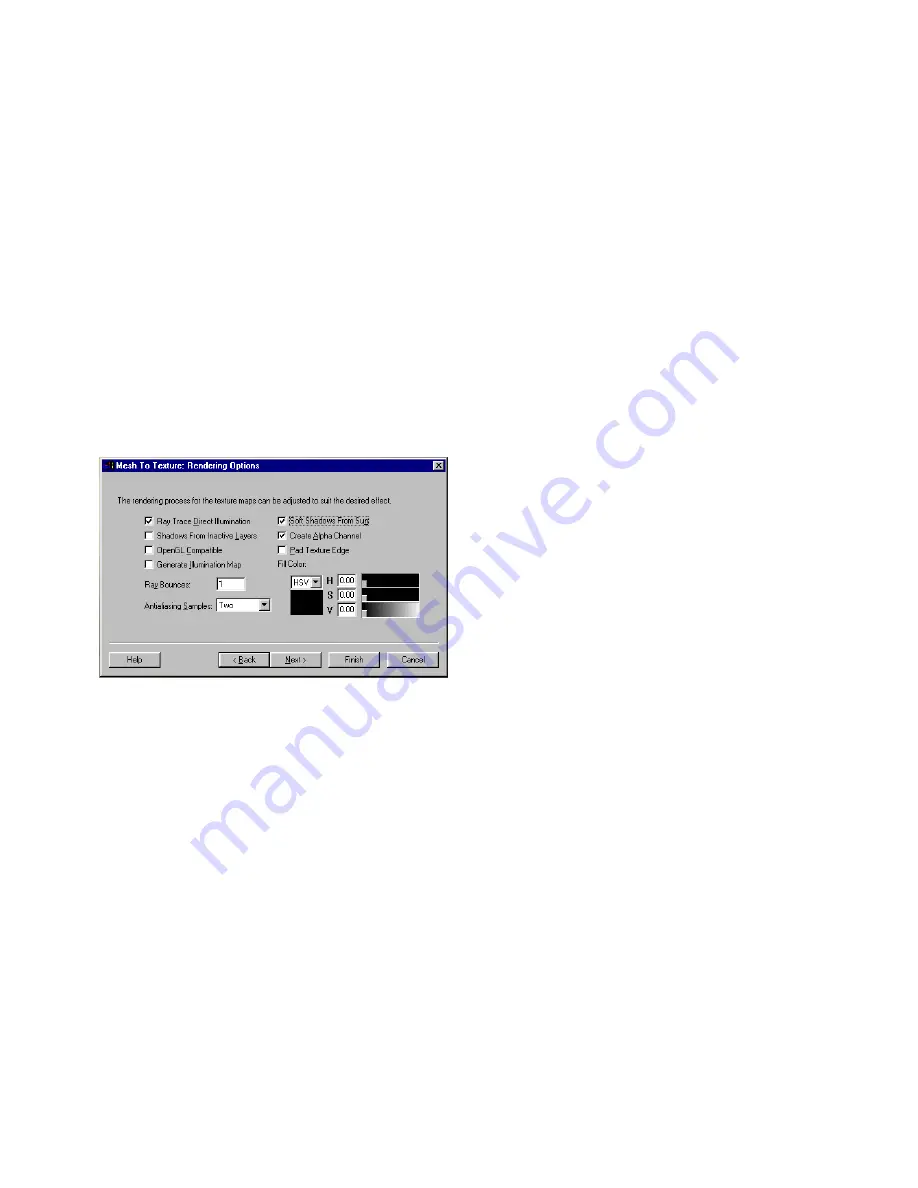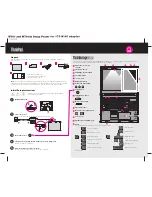
Using Mesh to Texture
209
❚❘❘
and you specify 8 pixels per inch, the resulting
texture image is 40 x 72 pixels.
If you select Use Surface Size, you can select the
Power of 2 option to constrain each output image
dimension to the smallest power of 2 greater than or
equal to its calculated size. With Power of 2 selected
in the preceding example, the output image
measures 64 x 128 pixels.
Rendering Options
All texture maps are rendered with ray tracing. Use
this page to set the ray tracing options.
Ray Trace Direct Illumination
Enable this option to recompute the direct energy
contribution of the sun and of luminaires set to use
ray tracing.
Shadows from Inactive Layers
Enable this option to consider the shadows from
objects on layers that are turned off when creating an
image. This option is used principally when it is
necessary to turn off layers to enable a certain view
(for example, the ceiling for a bird’s-eye view), but
when the lighting effects of those missing surfaces
are important.
OpenGL Compatible
Enable this option to make the final ray traced image
more closely resemble the OpenGL rendered image
displayed in the Graphic window. Because the ray
traced images differ in image quality from OpenGL
display, this option is important if you intend to
combine mesh-to-texture surfaces with non mesh-
to-texture surfaces in a real-time display application.
Generate Illumination Map
Enable this option to create a texture map consisting
of only the light striking the surface, instead of the
reflected light emitted from the surface (which is
what you normally see).
Soft Shadows from Sun
Enable this option to soften the edges of the shadows
from the sun, blurring the crisp shadow edge to give
a more natural effect. This can add a considerable
amount of time to the process.
Create Alpha Channel
Enable this option to create an alpha channel based
on the cumulative transparency of all surfaces
through which light rays pass. Also, the alpha
channel is transparent wherever the background
color appears.
Pad Texture Edge
The Pad Texture Edge option eliminates potential
artifacts around the edges of textures by filling in all
the pixels in the texture that do not lie on the target
geometry with pixels of a similar color. Where there
is projected geometry that does not land on the
target geometry, the padding will overwrite these
areas of the projected geometry.
Ray Bounces
Enable this option to set the number of ray bounces
in an image. The default is 0 because, typically, you
want to avoid view-dependent reflections in the
Summary of Contents for LIGHTSCAPE
Page 1: ...SULO 4 31 93 36034333308355 LJKWVFDSH...
Page 18: ...NOTES 10...
Page 110: ...NOTES 102...
Page 136: ...NOTES 128...
Page 166: ...NOTES 158...
Page 176: ...NOTES 168...
Page 202: ...NOTES 194...
Page 210: ...NOTES 202...
Page 248: ...NOTES 240...
Page 294: ...NOTES 286...
Page 308: ...NOTES 300...
Page 316: ...NOTES 308...
Page 324: ...NOTES 316...
Page 342: ...Glossary 334 Lightscape...
Page 360: ...Index ix 352 Lightscape...
Page 362: ......
















































